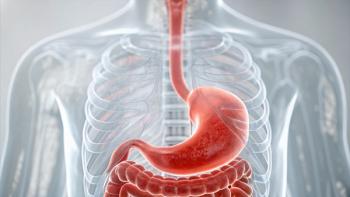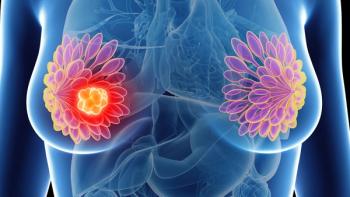
Recognizing Maladaptive Coping and Building Resilience in Oncology Nursing Is Vital
Acknowledging and addressing maladaptive coping mechanisms may help reduce moral distress and burnout among oncology nurses.
An already broken health care system became even more flawed with the onset of the COVID-19 pandemic setting precedents in nursing that have never been seen before and there is very little chance of things returning to the way they were, Deborah Boyle, MSN, RN, AOCNS, FAAN, said during a keynote at the 48th Annual Oncology Nursing Society Congress.1
“Nurses that are commonly referred to as the backbone of health care, and we’ve been hit the hardest of all the roles,” Boyle said. “We have the highest level of burnout. We have cited inadequate and inconsistent staffing, leadership, management support, and pervasive stress and fatigue. Those [who are] working in hospital-based settings have been hit the worst. We’re retiring early, quitting, or are planning to.
“There’s also been an invisible cost to pandemic that we don’t hear much about: profound loneliness, feeling alienated, and experiencing a relentless sense of grief. These have prevailed in our everyday work and emanate from what we lost. Not only have we lost patients and families, but we’ve also lost relationships that we’ve relied on over the years, [as well as] our sense of safety and security. [We’re] unsettled, vulnerable, and questioning ourselves.”
Boyle’s commentary set the stage for a roundtable discussion on nursing sustainability. The discussion featured the recipients of the Oncology Nursing Foundation's Mara Mogensen Flaherty Memorial Lecture award: Suzanne Carroll, RN, MS, AOCN, clinical nurse manager for ethics and resiliency at Roswell Park Cancer Center; Lauren Ghazal, PhD, FNP-BC, a post-doctoral research fellow at the University Of Michigan School of Nursing and Rogel Cancer Center; and Amy E. Rettig, DNP, MALM, MSN, BSN, RN, ACNS-BC, PMHNP-BC, a mental health APRN at The Ohio State University Comprehensive Cancer Center – The James Cancer Hospital.
“It’s time for us to start thinking forward, not mourning about times past, but engaging in efforts to plan our new and ideal future,” Boyle said.
Acknowledging Maladaptive Coping Strategies
“We all have our own narrative about what sustains us both personally and professionally,” Carroll said in a talk centered on maladaptive coping methods. “We just need to acknowledge what COVID did to us, and that we are not done going through it yet,” Carroll said. “We’re still adapting. We need to discuss maladaptive coping behaviors and the behaviors that nurses turn to if we’re going to sustain as a profession. We need to recognize that maladaptive coping behaviors are a sign of not coping. We just need to manage them with nonjudgement.”
Moral distress, burnout, and the great resignation are all terms that have gained prominence when discussions on workplace stability, and Carroll noted that these are not new concepts, but ones that have been great exacerbated since the pandemic.
“Moral distress has probably always existed in nursing, but the concept was introduced in 1984 by Andrew Jameson to describe the psychological distress of being in a situation which a health care professional is constrained from acting on what that person knows to be the right thing,” Carroll said. “In nursing practice, it [also] refers to the feelings that follow when a nurse feels their personal values have been compromised.”
Physical, psychological, and emotional symptoms may also manifest because of moral distress. These can include insomnia, nightmares, headaches, anxiety, depression, sleep irregularities, and gastrointestinal distress. “Moral distress unfortunately can lead to emotional exhaustion, detachment, disengagement, and a loss of fulfillment and a reduced sense of accomplishment,” Carroll said. “It’s often manifested by anger, stress, and fatigue, which can lead to strange relationships, substandard nursing care, poor patient outcomes, nursing turnover, and eventually nurses leaving the profession altogether.”
Burnout is defined as a state of emotional exhaustion, depersonalization, and a sense of reduced personal accomplishment, Carroll explained adding, “Burnout is an occupational condition. It’s not a medical condition.”
There is a positive correlation between moral distress and burnout, she said. “If we can mitigate moral distress, we can lessen burnout,” she said. In a white paper released in 2018, noted that 30% to 80% of bedside nurses reported burnout and that the generation struggling the most with activation or finding joy in their profession was millennials.2 the rates of burnout continue to rise and the COVID-19 pandemic and resulting issues of workplace safety have increased rates of burnout from 63% in 2017 to nearly 99% in a survey conducted in 2022. In 2021, approximately 30% of nurses quit their jobs.3
“The growing prevalence of burnout poses a threat to patient safety, quality, and the experience of their care,” Carroll said. “Burnout is a sign of a toxic work environment [and although] it’s important to be resilient, it’s not enough. We need to make the environments in which we work in less toxic. Psychological safety is as important as physical safety.”
Ultimately, Carroll noted that burnout affects the hospital health care systems economically as well. “It’s estimated in that in 2020, the cost to replace a nurse was $82,000. That’s roughly $1 million to replace a dozen nurses,” she said.
For those who remained in the profession, findings healthy coping strategies has presented an uphill battle. “Lockdowns and social isolation, resulted in detrimental health effects and increased drinking across society,” Carroll said. Results of a national survey on drug use and health showed that in 2021, 16.5% of the of the population aged 12 years or older met the criteria for having a substance abuse disorder.4
Estimates of substance abuse among registered nurses is consistent with the general population, but Carroll noted that the numbers may be under reported because of stigma, discipline, and fear of job loss. “So, when you think about it, that’s approximately 1 out of every 5 to 7 RNs who are affected by [drinking] and addictive disorder. Substance use causes harm personally, socially, professionally, and has organizational consequences,” she said.
Food has also been cited as a maladaptive coping mechanism. “As nurses, we are prone to quick eating and consuming sugary caffeinated drinks. We don’t get enough exercise and we don’t get enough sleep. There have been many studies showing that shiftwork increases the risk for obesity and mortality. We are also under tremendous stress, which causes depression, migraines, weight gain, and cardiac and musculoskeletal issues. It’s not what we’re eating, it’s what’s eating us,” Carroll said.
Another less obvious maladaptive practice is overachievement. “[We’re] overextending ourselves, we’re available to everybody else, and then we don’t have time for ourselves,” Carroll said. Other behaviors can include over exercising and addiction to social media.
Finding and Remembering Your “Why”
As Ghazal recounted her journey through her primary nursing education and subsequent PhD in nursing, she pinpointed 3 questions that kept her on course even after she received diagnosis of cancer. “What is it that you excel at? What is it that you’d like to do? And third…what does the world need?”
Reflecting on these questions individually is only one way to find a way through moral distress or a tough spot, Ghazal said. Bringing ideas and reflections to meetings and interactions with colleagues is another way to leverage skillsets toward a common goal.
“Nurses who started their careers many years [ago], think about your why and if that's changed, since you started nursing to now, have your answers to these questions changed? I urge you to reflect on these, especially for those feeling stuck,” Ghazal said.
Lastly, Ghazal encourages nurses to bring their voice. “I was empowered early on that my experiences matter, and that I as a person matter. That’s very easy to forget as nurses who continue to experience workplace violence and hostility for doing our jobs. Oftentimes we are underrecognized and underappreciated, which has only been heightened by the pandemic,” she said.
Ghazal uses her voice to write op-eds and speak to the media about her experiences and the issues facing the nursing community. “We know that nurses have been long left out of the public conversation, and I welcome each and every one of you to continue to share your stories, have your voice heard, and empower others to promote nursing sustainability.”
References
- The Oncology Nursing Foundation's Mara Mogensen Flaherty Memorial Lecture: current challenges: nursing sustainability. Presented at: 48th annual Oncology Nursing Society Congress; April 25-30, 2023; San Antonio, TX. Accessed April 28, 2023.
- 2018 nursing report: key drivers of intent to stay for newly licensed and experienced nurses. Press Ganey. December 3, 2018. Accessed April 28, 2023.
https://info.pressganey.com/e-books-research/2018-nursing-special-report-optimizing-the-nursing-workforce-key-drivers-of-intent-to-stay-for-newly-licensed-and-experienced-nurses - 20 stunning great resignation statistics [2023]: why are Americans leaving their jobs? Zippia. October 12, 2022. Accessed April 28, 2023.
https://www.zippia.com/advice/great-resignation-statistics/ - SAMHSA announces national survey on drug use and health (NSDUH) results detailing mental illness and substance use levels in 2021. Department of Health and Human Services. January 4, 2023. Accessed April 28, 2023.
https://www.hhs.gov/about/news/2023/01/04/samhsa-announces-national-survey-drug-use-health-results-detailing-mental-illness-substance-use-levels-2021.html#:~:text=46.3%20million%20people%20aged%2012,having%20a%20drug%20use%20disorder
Newsletter
Knowledge is power. Don’t miss the most recent breakthroughs in cancer care.































































































